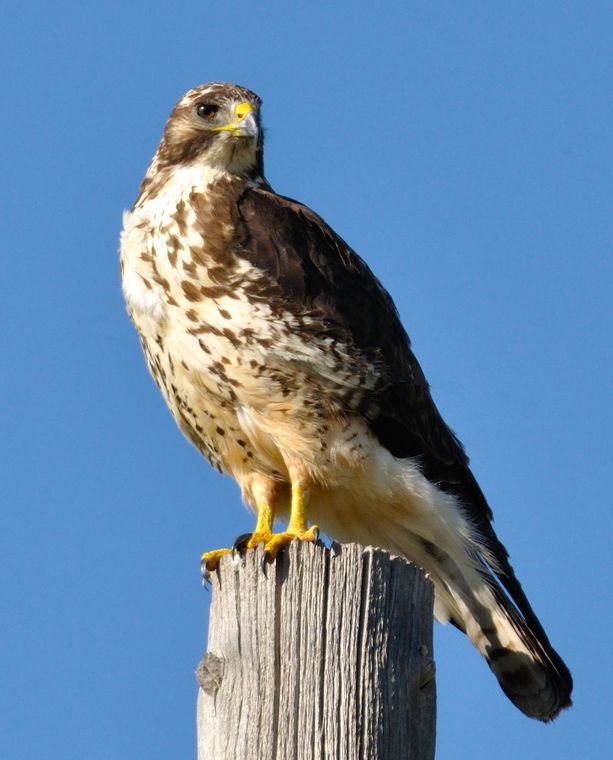Raptors are ever-present in the Moab area.
Eagles, falcons, hawks, osprey and owls no doubt make interesting subjects, but there is much to learn about how to safely observe – and even assist – these magnificent birds of prey.
The Raptor Inventory Nest Survey (RINS), in conjunction with the U.S. Bureau of Land Management’s (BLM’s) Moab Field Office, is offering volunteers a unique opportunity to learn about the variety of Utah’s raptors. Participants will attend a training workshop on Tuesday, Jan. 31, from noon to 4:30 p.m., and later monitor an assigned area with two visitations a month, from February through June.
“I always tell my volunteers, the number-one rule is I want them to have fun,” says RINS Director Robyn MacDuff, who will lead the training.
But MacDuff has plenty of other rules to guide prospective and returning “citizen scientists” out in the field.
“It’s not about exploiting the birds; it’s about protecting them and keeping a distance,” MacDuff says.
According to the RINS mission statement, the group is an all-volunteer organization concerned with birds of prey that nest throughout Utah. The organization focuses on ensuring the success of nesting raptors and habitat protection.
The organization was founded in the Salt Lake area in 2000, and spread to Moab in 2013.
“We’ve got about 20 good solid volunteers that live in Moab,” MacDuff says. “They have really blossomed into a nice group of people. But we could add another 10 or 20 … we have lots of areas to monitor.”
MacDuff says the amount and type of hiking depends on the interests and abilities of the volunteer. While some monitoring can be done from a vehicle, other terrain is more suited for those who want to get out, hike and explore.
“It’s a fun project; there’s always something new to learn,” MacDuff says. “There (are) quite a few aspects to it: navigating, finding the birds and collecting information on the vegetation.”
MacDuff explains that as volunteers learn more about how to survey, they become more familiar with their areas. The birds, in turn, become more accustomed to that individual. This brings less stress to the nesting raptors, which is ultimately the goal.
The surveys give the organization a sense of which birds are having a harder time than others, and why.
According to MacDuff, most hawks are in good shape. However, the ferruginous hawk, the largest of the buteos, does not like human interference, and has become a species of concern.
The burrowing owl is also a species of concern.
“There has been much disturbance to the original areas where they nested,” MacDuff says. “So now, a lot of wildlife folks and scientists that have the ability to make policy on behalf of them … they are doing just that.”
To become a volunteer, contact RINS at 801-554-0807, or email info@rins.org for more information about the mandatory Jan. 31 training from noon to 4:30 p.m. It is recommended that you own a pair of binoculars, a GPS unit, a digital camera and have an email address.
The time commitment involves visiting an assigned area to monitor from February through June.
“It’s a long-term project. Nobody has funding to put people on the ground like we do,” MacDuff says. “That’s the beauty of our project. It tells a story that we otherwise would not know.”
Group to hold volunteer training for birds-of-prey nest inventory
“It’s a fun project; there’s always something new to learn … There (are) quite a few aspects to it: navigating, finding the birds and collecting information on the vegetation.”
When: Tuesday, Jan. 31, from noon to 4:30 p.m.
Where: Email info@rins.org, or call 801-554-0807, for details and a questionnaire
Cost: Free
For more information about RINS, visit rins.org.




